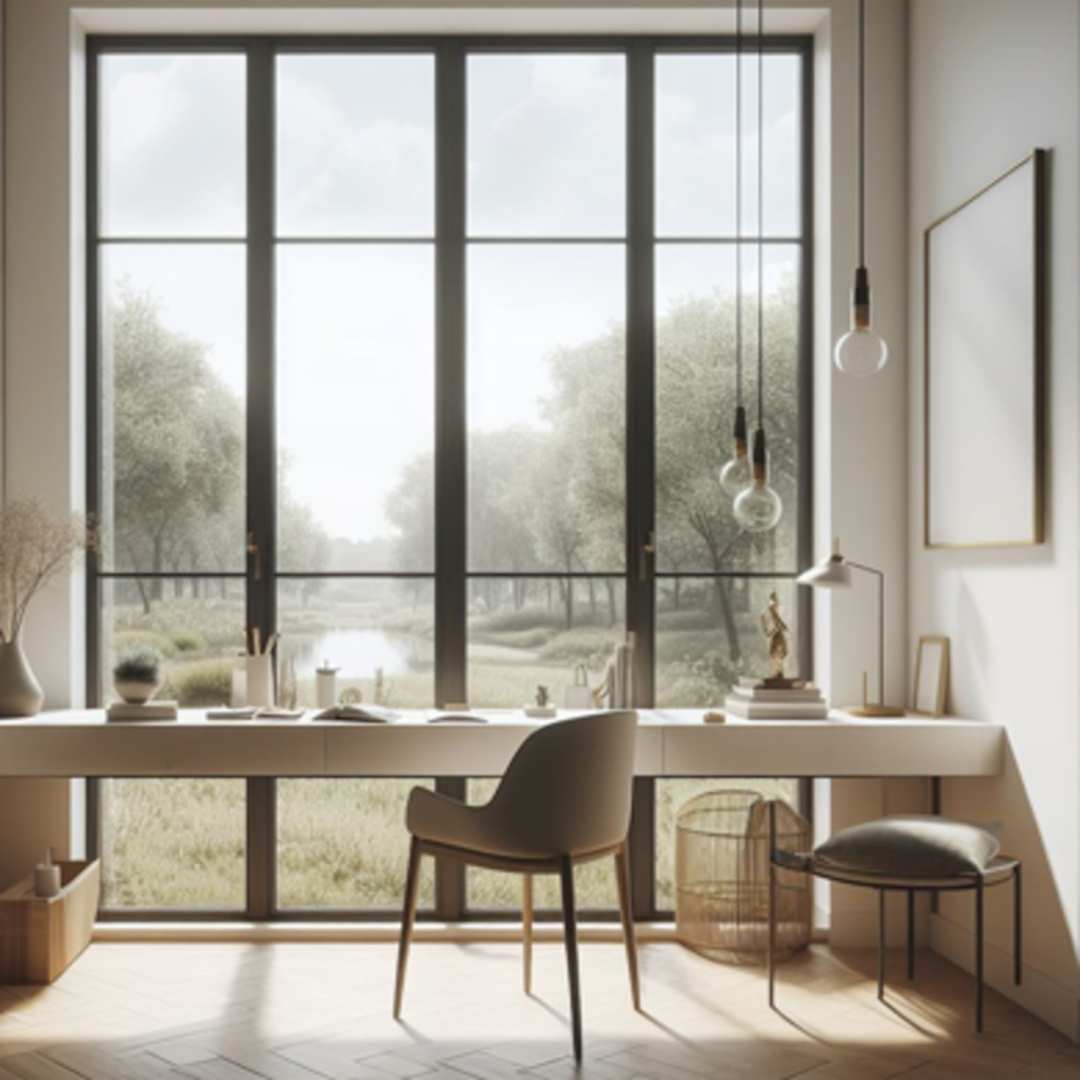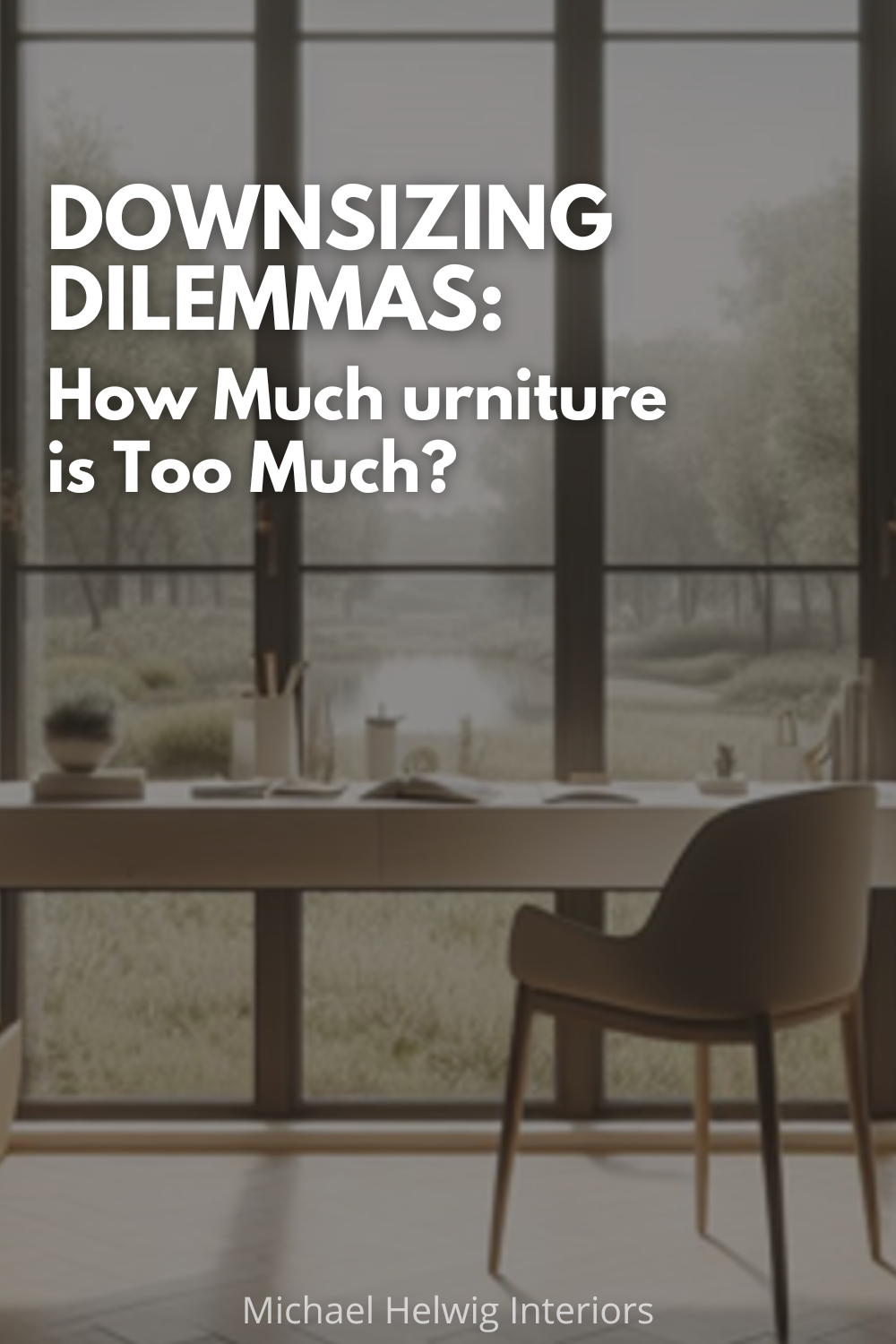Guest Post by Indiana Lee
When you’ve decided to downsize your home, it’s natural to assume you’ll have less furniture in it. You certainly don’t want to be unnecessarily minimalist to the point where your smaller home is an echoey cave. Yet, it can also be easy to cross that fine line between a cozy home and some kind of suburban furniture showroom.
Let’s face it: people from various demographics are using downsizing to simplify their lives and reduce expenses. This is only practical if your smaller space isn’t overflowing with unnecessary furniture.
Nobody’s saying that you’re at risk of being featured on an episode of Hoarders. At the same time, having a good sense of what constitutes too much furniture can help you enjoy a more positive and comfortable lifestyle as you downsize.
Let’s explore a few of the warning signs of over-furnishing and how limiting your collection can have good outcomes.
Keeping Your Home Functional
Retirees, in particular, find that downsizing helps keep budgets lower, enabling them to thrive on a reduced income. Alongside streamlining debts and other responsibilities, one of the best approaches to keeping financially afloat is to live in a smaller home.
One of the things you should think about when you’re downsizing is whether the furniture is helping or hindering functionality. Yes, your home must be lived in, and it doesn’t have to be super-optimized for maximum efficiency. But you don’t want so many pieces that you find navigating your house too challenging.
What do we mean when we talk about functionality? Some elements to consider include:
The furniture causes congestion: We don’t mean you have a bunch of cars having traffic jams in your home. If that’s the case, too much furniture is the least of your worries. Rather, excessive furniture — whether due to size or number — can clog up the flow when people need to move around the space. Particularly in smaller homes that have multiple family members moving through, this can make things more frustrating and even cause accidents.
The furniture disrupts the ambiance: Another sign that there’s an unnecessary amount of furniture when you’re downsizing is it affects how it makes you feel. It may not seem like a big deal, but your home is the one place in the world that should feel comfortable and safe. Too much furniture in one room might make it feel too busy or messy when you want to relax. Even in a home office space, excessive furniture might be a distraction that stops you from feeling productive.
When you have these kinds of issues, you don’t need to immediately just start throwing out all your furniture out the front door. Instead, when downsizing, take a little time to go through each room in your home and consider how the furniture affects the space. Think practically and emotionally. You can then start to have a clear idea about what needs to change and how to adjust your furniture to support your intentions.
Considering Your Finances
Furniture can be among the most expensive items in your home. Obviously, if you’re looking around your home at a bunch of furniture you’ve already bought, there’s no turning back the clock and refilling your bank account. Yet, reducing your furniture during the downsizing process can help you minimize some additional unnecessary expenses moving forward.
Some things to consider here include:
Minimizing moving costs: Downsizing gives you an opportunity to save money with a small move. Fewer items means that you can hire a smaller moving vehicle. Reducing your furniture can also minimize the weight of your load, which also limits the gas expenses of your journey to your new place. Indeed, you might find that moving some expensive, fragile, or heavy furniture items costs more than it would to buy new. This may help you decide to do without it a little easier.
You may be able to reduce insurance premiums: Getting rid of some of your furniture as you downsize might mean that you can get a lower-priced home contents insurance policy. This is because, depending on how much furniture you get rid of, the value of your home contents has been reduced. Many moving companies will also offer insurance during your move based on the value of your items, so you won’t be paying as much for this either.
Another thing to consider is that one way you can reduce your unnecessary furniture is to sell it. This, of course, gives you a little extra free cash. Indeed, with older items, you can take the time to repair, reupholster, or renew them before selling. You may find this may increase the price you can get for it.
Consider Adjustable and Multipurpose Pieces
Reducing your furniture when you’re downsizing doesn’t mean you need to live a bare existence, camping out in an empty room and having your meals picnic-style on blankets. Furniture is an important part of a comfortable lifestyle. You can maximize your space and minimize your chaos by investing in some multipurpose or adjustable furniture.
Some good examples here include:
Ottomans: These pieces of furniture operate as seats, footrests, and storage all rolled into one package. As a result, you don’t have to fill your room with unnecessary individual cabinets, chairs, and poufs.
Nesting tables: There will be times when it’s useful to have a side table for each seat in your living room so that family members and guests can set down their drinks, snacks, books, or phones when relaxing together. Nesting tables allow you to do this without taking up extra room when they’re not in active use.
Modular sofas: Having a large sofa is great if you have a big family or if you entertain company often. That said, a large sofa of a fixed size doesn’t always fit in a smaller space. Modular sofas allow you to adjust the piece to the shape or flow of your room.
Having these pieces doesn’t give you a license to get as many as possible, though. Too much adjustable furniture gives you many of the same problems as having a house filled with single-use items. Exercising a little restraint and remembering that the intention is to simplify your life is key to making smart choices.
Conclusion
Keeping your furniture at a functional and comfortable level when you downsize tends to have a better outcome than bloating your home with unnecessary pieces. It’s important to perform mindful decision-making, particularly if you plan to downsize in the future. Remember, too, that you can assert your personality on your home in ways other than furniture, such as with wall decorations and floral arrangements. With a little consideration and planning, you can get the most enjoyment and usability out of your space.
Read Next:
Stylish And Pet-Friendly: How To Design Your Small Home For Comfort And Elegance
Transform your small space into a pet-friendly paradise without compromising style! From clever decor choices to smart storage solutions, learn how to keep your home clean, safe, and chic while living with your furry companion. Dive in and create a space you both will love!
Join the Fun!
If you enjoyed this post and you want to keep seeing my weekly blog, the best way to do that is to subscribe.
You can subscribe by downloading my 11 Secrets Only Designers Know to Make Your Space Rock. If you’re curious about how decorators and designers make a home look magazine ready, you’ll love taking a gander at these 11 secrets. You’ll learn how to style your room from the floor up and it will work for ANY space you have.
I write about small space design and decorating, sustainable furniture options, positive self care and a variety of do-it-yourself home décor.
I’d love to connect with you!
“Michael Helwig was top-notch, very professional and responsive to my needs. He allowed me time to explore ideas and try out a variety of combinations until we found the perfect fit. Michael provided detailed information and offered beautiful ideas to make my dream living room become a reality. The furniture he sourced has totally transformed my living room space. Everyone that has seen my new living room has one word, WOW! A special thank you to Michael for a wonderful experience.”
“Michael was very knowledgeable and guided us, with great patience and good humor, through the process of designing our dining room and helping us find the perfect sleeper sofa. He offered really helpful advice when we asked questions - which was often - but at no time did we ever feel pushed. He helped me when I felt like I couldn’t make one more decision. When my new furniture finally arrived I realized everything down to the pillows was perfect. I couldn’t be happier!”
The opinions and views expressed in any guest blog post do not necessarily reflect those of Michael Helwig Interiors or its Principal, Michael Helwig. Michael Helwig Interiors, and Michael Helwig, do not have any affiliations with any products or services mentioned in the article or linked to therein. Guest Authors may have affiliations to products mentioned or linked to in their articles or bios.
Indiana Lee is a passionate writer and avid puzzle enthusiast hailing from the serene landscapes of the Pacific Northwest. With a deep appreciation for aesthetics and a strong preference for designs that seamlessly blend comfort and functionality, she brings a unique perspective to the world of interior decor. Connect with her on LinkedIn.












